With more than 850 paintings and nearly 1,300 works on paper, Vincent van Gogh (Groot-Zundert, Brabant, Netherlands 1853 - Auvers-sur-Oise, France 1890), a painter, draughtsman and printmaker active in the 1880s, is considered after the seventeenth-century Rembrandt van Rijn to be the greatest modern Dutch artist and the best known of the Post-Impressionists.
In his personal parabola marked by emotional disturbances, he began artistic activity at age 27 and devoted himself totally to it over the next ten years before his untimely death. In his short life he managed to sell very few of the countless works he produced, and his acclaim came years after his death. Still lifes and landscapes, sun-drenched and nocturnal, city views, interiors and exteriors of houses, self-portraits and portraits make up an imagery unique in art history, and his mature style, marked by the use of pure colors and full-bodied brushstrokes, set an example for many artists in the 20th century.
Starting out in peasant Holland, he lived in The Hague, London, Antwerp and Amsterdam before moving to France, to Paris, then Provence and finally to the Île-de-France. Much of his life story is known to us thanks to his correspondence with his brother and patron Theo Van Gogh (the publication of the letters to Theo dates from 1914, and the first major English edition dates from 1927), through which he has also been mythologized in the popular imagination as the tormented, brilliant and misunderstood artist par excellence.

Born Vincent Willem van Gogh on March 30, 1853, in a small village in the province of Brabant in the Netherlands, he was disturbed from childhood by restlessness and experienced solitary contact with nature. The eldest of six children, he studied with poor results only to begin working at the age of sixteen. As an apprentice to the art merchants Goupil & Cie he lived first in The Hague then in London from 1873 to 1875 and in Paris until 1876, when dissatisfied with the collaboration and distracted by his fluctuating moods he was discharged. It is from those years that he first corresponded, from September 1872 then uninterrupted until his death, with his younger brother Theo, also employed by Goupil in Brussels, who would support him emotionally and financially throughout his life. In his many trips and sojourns abroad he visited important museums such as the British Museum and the National Gallery in London and the Louvre in Paris and came in contact with works of art that aroused in him taste and artistic sensibility.
He tried several temporary jobs before coming to ’painting in 1880. He worked as a language teacher and lay preacher in England and, in 1877, for a bookseller in Dordrecht near Rotterdam in the Netherlands. At that time he was living a religious mysticism, cultivated on the model of his father who was a Protestant pastor. The letters he wrote to Theo at that time were filled with biblical quotations and accounts of religious services and sermons. Thus, relying on family support, he attempted theological studies at a school in Amsterdam but failed to complete them, and in 1878 he chose training as an evangelist in Brussels. He also spent time as a missionary in the Borinage mining region of Belgium. There he lived among the miners and their families, sharing their poverty with such dedication that he was nicknamed “The Christ of the Coal Mine.” However, even this experience was interrupted: he had given away all his worldly possessions and was then dismissed by church authorities for too literal an interpretation of Christian teaching. In 1879-80 he experienced a first major spiritual crisis, tormented also by his economic state, as he no longer had a paid job. In letters sent to Theo, Vincent often included small sketches and drawings of what he saw, and it was his loving brother who advised him to concentrate more on painting practice. That was a turning point in his life, where he became convinced that he could also serve God as an artist.
By the time he had moved to Brussels in late 1880 and until mid-181, he had already begun to work on his drawing technique, coming into contact with other artists, taking his first painterly steps, although from a very young age and in the preceding years he had trained knowledge with readings and visits to the art collections of the great cities that saw him as a guest. In that two-year period he decided to devote himself definitively to painting. He returned first to his parents’ home in Etten where his father had been transferred, spending an industrious period, and then again to The Hague, where he took painting and drawing lessons with the artist Anton Mauve, who taught him the basics of watercolor and oil painting. The recurring wreckage of his love projects spurred Van Gogh to devote himself more assiduously to art: he moved again to the north of the Netherlands, to the Drenthe region, and then returned once more to the home of his family, which in the meantime resided in Nuenen, Brabant, where thanks to the help offered to him by his own parents he produced almost two hundred paintings and numerous watercolors and drawings, and some of those considered his first masterpieces.
The protagonists of these works from the Dutch period between 1883 and 1885 were workers and peasants in the fields and the village of Nuenen. From 1885 came a symbolic and unexpected event that disturbed his course, the death of his father, struck down by an apoplectic attack after a violent altercation with him. Despite the ancient and deep disagreements between the two, this sudden absence created in Van Gogh inner turmoil later poured into his artistic practice. One example is Still Life with Bible.
In the same year he decided to enroll in theAntwerp Academy of Art and left the Netherlands, never to return. He discovered the art of Baroque painter Peter Paul Rubens, whose swirling forms and loose brushstrokes had a clear impact on young Van Gogh’s style. However, the rigidity of the school’s academicism did not appeal to him, and the following year he left for Paris to join his brother Theo. In the capital he met Henri de Toulouse-Lautrec, Paul Gauguin and Theo introduced him to Camille Pissarro, Georges Seurat and others involved in Impressionism and Post-Impressionism. At the same time he took lessons in Fernand Cormon’s studio. By the summer of 1887 he was painting with pure colors and using broken brushstrokes that were sometimes pointillist, and by early 1888 his postimpressionist style had become defined.
He left the urban center of Paris for the countryside of Arles. The pictures he created between ’88 and ’89, depicting flowering fruit trees, views of the city and its environs, self-portraits, portraits of Roulin the letter carrier and other friends, home interiors and exteriors, sunflowers and landscapes, marked that period of artistic production. In Paris he had hoped to form an autonomous Impressionist group with Gauguin and others whom he believed had goals similar to his own. He rented and decorated a house in Arles with the intention of persuading them to join him and founded a working community called"The Studio of the South." At his insistence, Gauguin arrived in Arles in October 1888, and for two they worked together, although although they influenced each other, their relationship deteriorated rapidly.
On Christmas Eve 1888, physically and emotionally exhausted by their disagreements, Van Gogh cut off the lower half of his left ear. In late April 1889 he voluntarily entered an asylum but continued to paint; he spent a year there but despite his unstable mental health, he was very productive and completed 150 paintings and drawings, including Flowering Almond Tree Branch, 1890. Vincent spent the last months of his life in Auvers-sur-Oise, an artists’ village near Paris, an experience that amounted to a burst of activity. He soon suffered a relapse, however, and died on July 29, 1890 from an accidentally self-inflicted gunshot wound. He is buried with his brother Theo, who died soon after in 1891, in the cemetery in Auvers-sur-Oise, France.
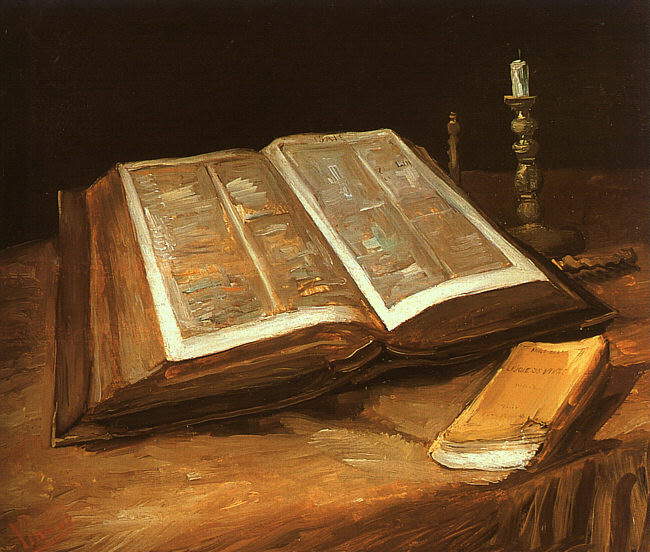
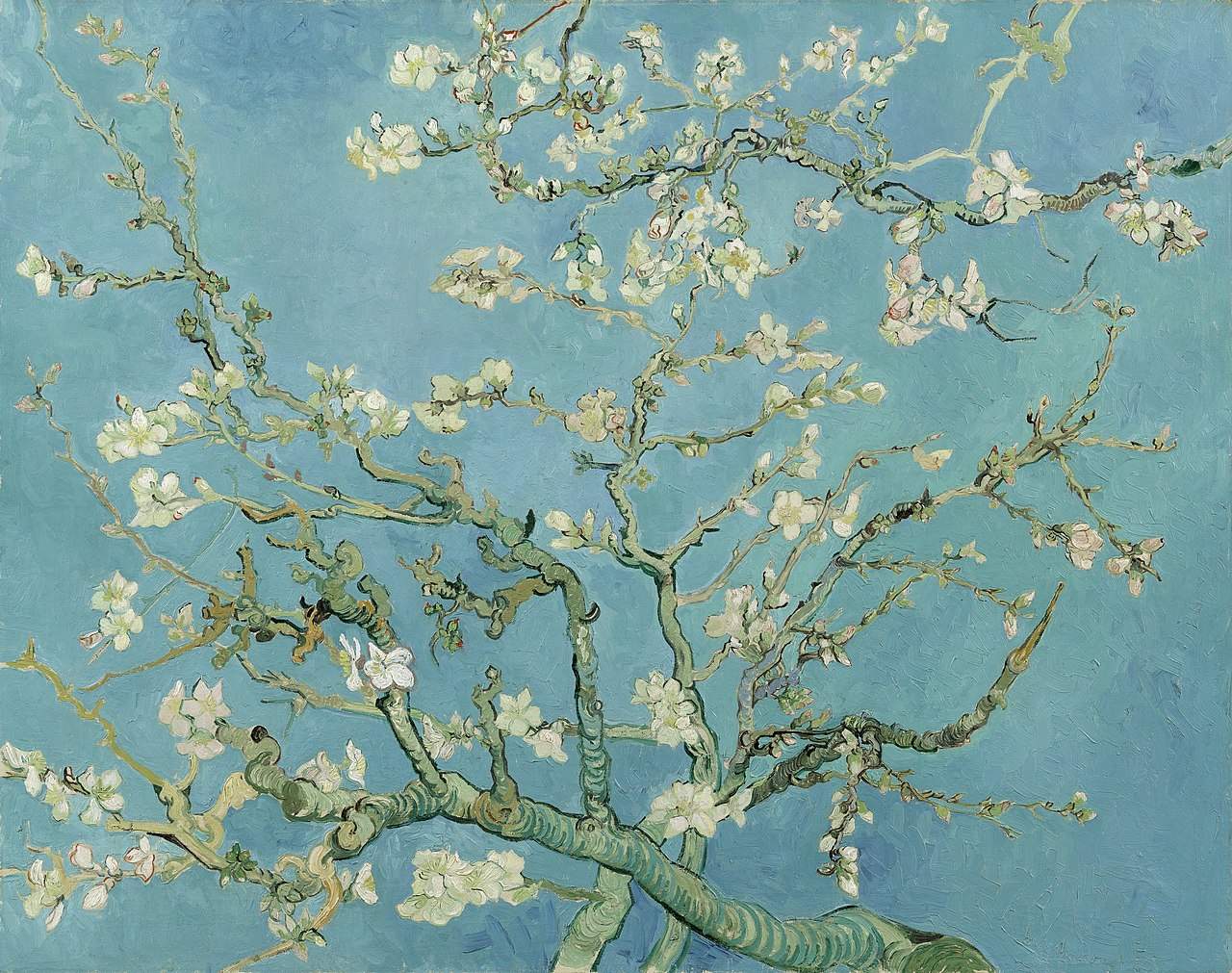

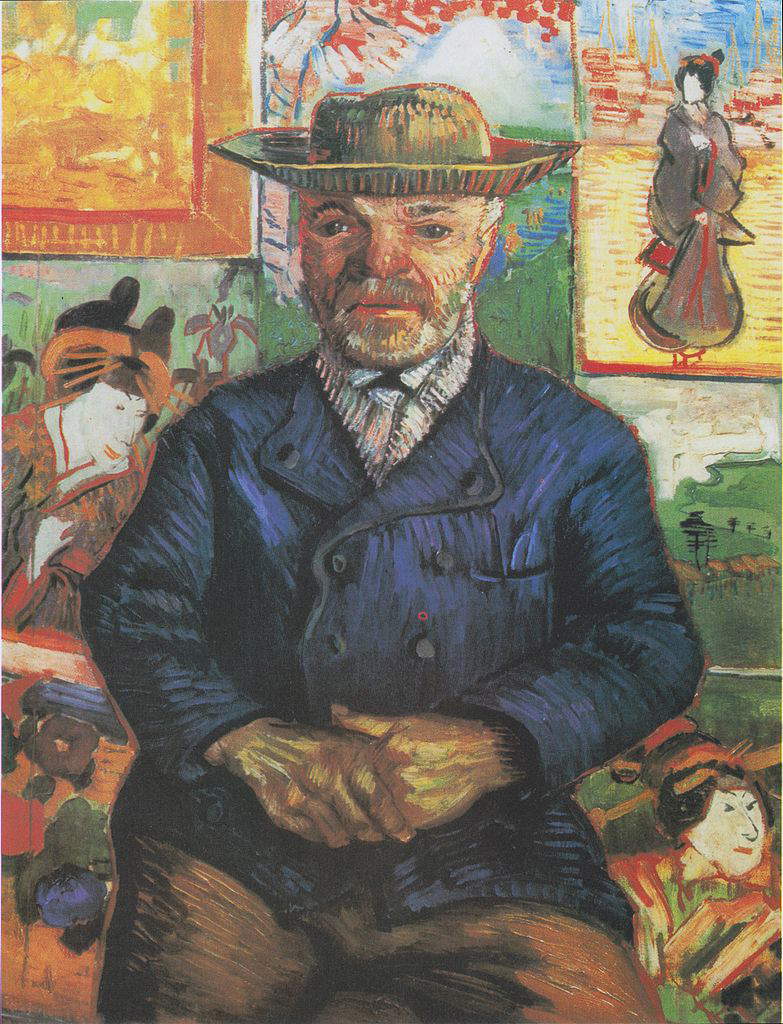
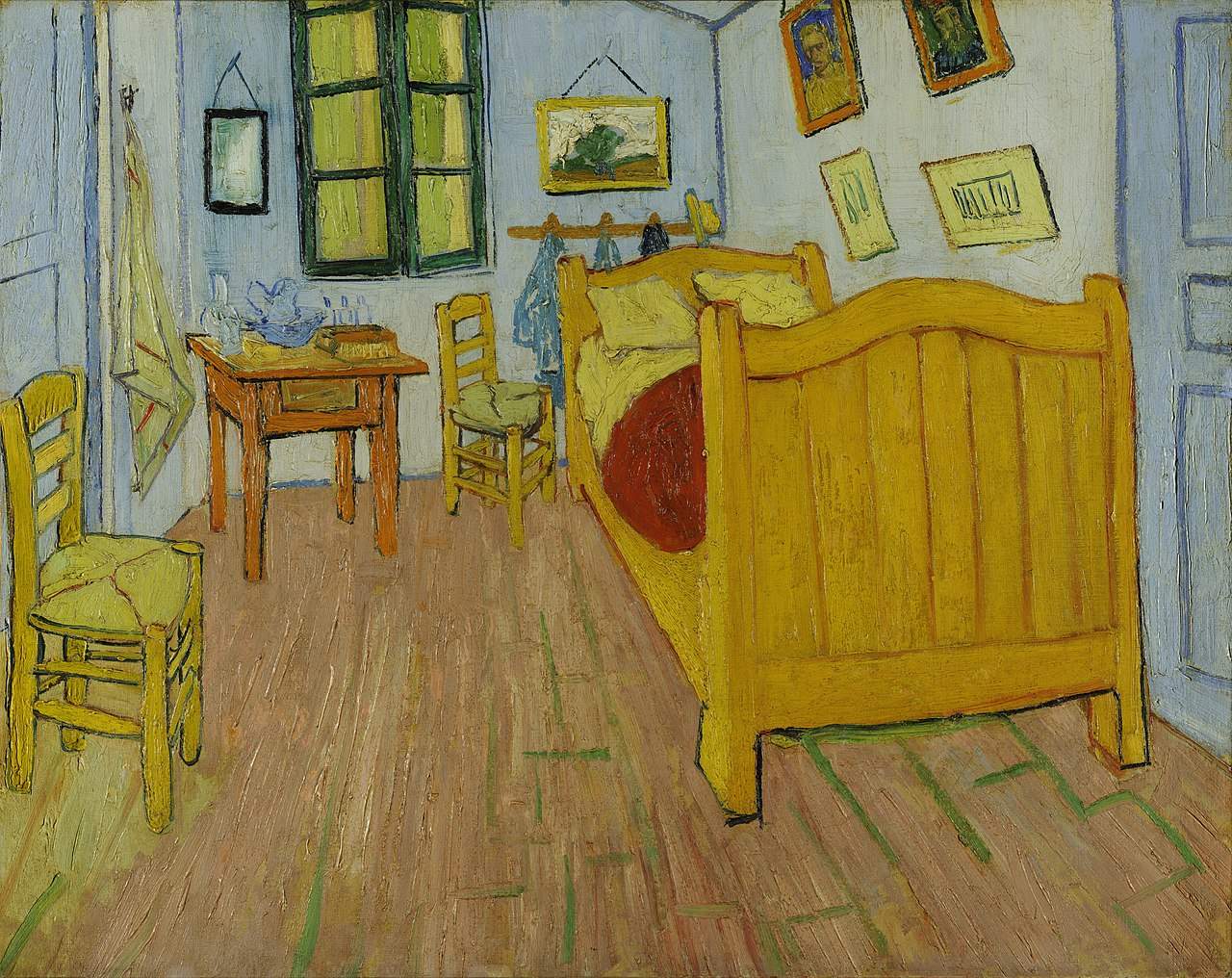
His artistic career was short, lasting only from 1880 to 1890, growing year by year toward expressive, gestural painting and symbolic colors in relief, to express subjective emotions about nature and landscape, imbued with humanity. The most important element of Van Gogh’s style he himself expressed by writing, “true painters do not paint things as they are, they paint them as they feel they are.” Life and works were an inseparable union for him.
The letters written to his brother Theo and other friends (some 700 preserved to this day), give an account of his goals and convictions, his hopes and disappointments, and his physical and mental state, and constitute a unique biographical record. Van Gogh’s fame dates back to the early twentieth century, and since then his reputation has never ceased to grow. His image as a struggling genius and the dramatic elements of his life--financial instability, self-mutilation, nervous breakdown and suicide--fueled his immense output.
During his first four years of painting he limited himself almost entirely to drawing and watercolor. When he moved to his father’s parsonage in Etten, Netherlands, in 1881, he began working with natural themes. Van Gogh worked hard and methodically, but soon sensed the difficulty of self-education and the need to seek the guidance of more experienced artists, as he did in The Hague in 1881 with the Dutch landscape painter Anton Malve. He thus extended his technical knowledge and experimented with oil painting in the summer of 1882. In 1883 the urge to be “alone with nature” and the peasants took him to Drenthe, an isolated part of the northern Netherlands frequented by Malve and other artists, where he spent three months before returning home, which was then in Nuenen, another village in Brabant. He remained in Nuenen for most of 1884 and 1885 and his painting became bolder and more confident. He painted three types of subjects, still life, landscape and figures, all related by their reference to the daily life of peasants, the hardships they endured and the countryside they cultivated, a well-known example being The Potato Eaters, 1885.
His understanding of the possibilities of painting was evolving rapidly, and by studying the works of great masters he learned how to portray the freshness of a visual impression, and how to express himself with color. The painter Peter Paul Rubens inspired his sudden departure for Antwerp, Belgium, to be able to see his works in person. It was a revelation to Van Gogh that Rubens’ ability to express a mood through a combination of colors was decisive in the development of his later style. At the same time, he had discovered Japanese Ukiyo-e prints and Impressionist painting, and all these sources influenced him more than the academic principles taught at the Academy of Fine Arts in Antwerp, where he was enrolled. His refusal to follow academic dictates led him in 1886 to Paris. There, still concerned with improving his drawing, he discovered what were the latest developments in French painting.
Between 1886 and 1888 a personal language and style of postimpressionist brushwork emerged, the colored palette and lighter tones. In early 1888 he produced masterpieces such as Portrait of Père Tanguy and Self-Portrait before the Easel, as well as some landscapes of the Parisian suburbs. That year he left Paris for Arles as he wished to “look at nature under a brighter sky.” His passion at that time was for"a complete effect of color"(Vincent’s Room in Arles, 1888).
In the pictures until 1889 he seemed to respect the outward appearance of sharply outlined figures and landscapes, however filtered by his own feelings. He began to squeeze tubes of oil paint directly onto the canvas, working as he recounted in his letters, with great speed and intensity, determined to capture his own moods. “When someone says that such [painting] is done too quickly,” he told his brother, “you can answer that they looked at it too quickly.” Indeed, Theo was attempting to market Vincent’s works. The Sunflowers series, one of his most iconic, dates from 1888-89. After the episode for which he cut off part of one of his ears, he had self-portrayed himself with a bandaged ear and made several still lifes and portraits such as the female one in La Berceuse.
In mid-1889, fearing that he would lose his renewed ability to work after the self-inflicted accident, he asked to be temporarily confined in the Saint-Rémy-de-Provence asylum for medical treatment. Persecuted by recurring attacks, alternating between moods of calm and despair, he worked on masterpieces such as The Starry Night, Garden of the Asylum, portraits of doctors and interpretations of paintings by other artists such as Rembrandt, Delacroix and Millet(Noon - Rest from Work, 1890).
The keynote of this 1889-1890 phase was the fear of losing touch with reality, as well as a certain sadness. Having no choice of subject matter and realizing that his inspiration depended on direct observation, Van Gogh was torn about having to work from memory. At Saint-Rémy he toned down the vivid colors and his painting was calmer, developing a style based on dynamic forms and a vigorous use of line. The most important paintings made in the mental hospital were more visionary and melancholy than those in Arles(A Wheatfield with Cypresses, 1889).
Van Gogh himself ended this period. Oppressed by nostalgia, painted souvenirs of Holland, and loneliness, he went to stay in Auvers-sur-Oise. Back in a village community such as he had not known since Nuenen four years earlier, Van Gogh initially worked enthusiastically on subjects such as wheat fields, river valley, peasant houses, church and town hall that reflected his spiritual relief. A change in his style followed: natural forms became less contorted and he rendered light in cooler tones. His brushwork became broader and even more expressive and his vision of nature more lyrical. Everything in these images seems to move, to live. This phase was brief before his last supposed work, Wheatfield with Crows Flying, 1890.
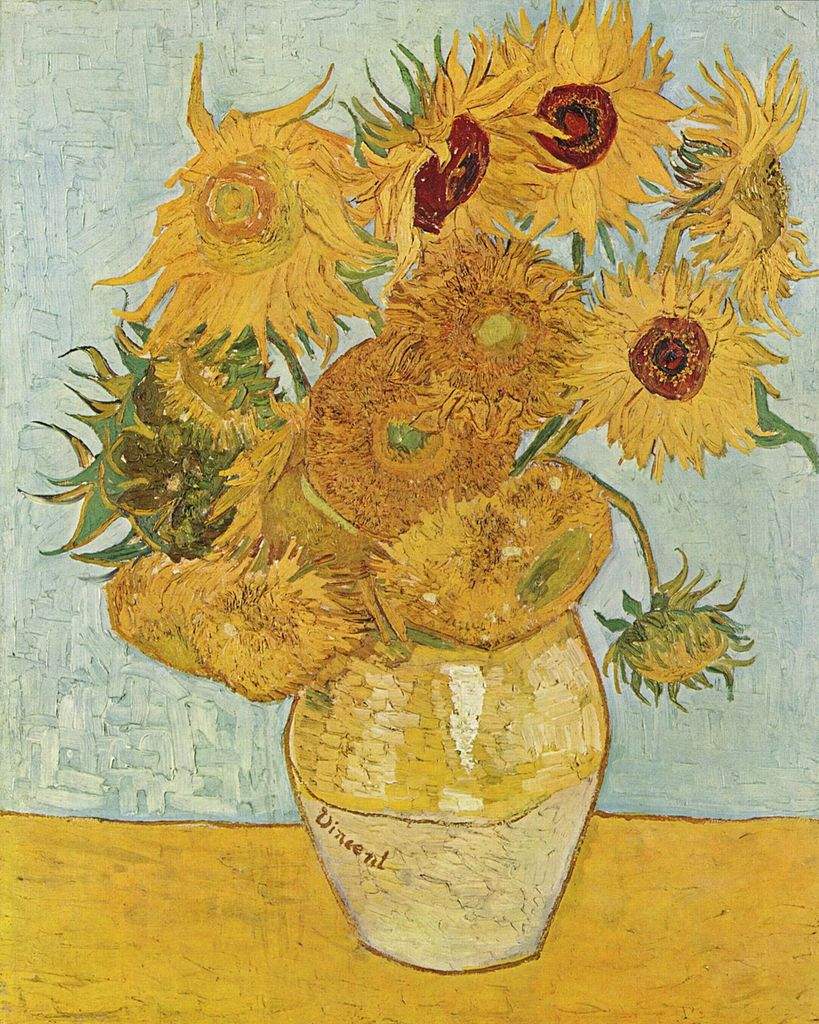
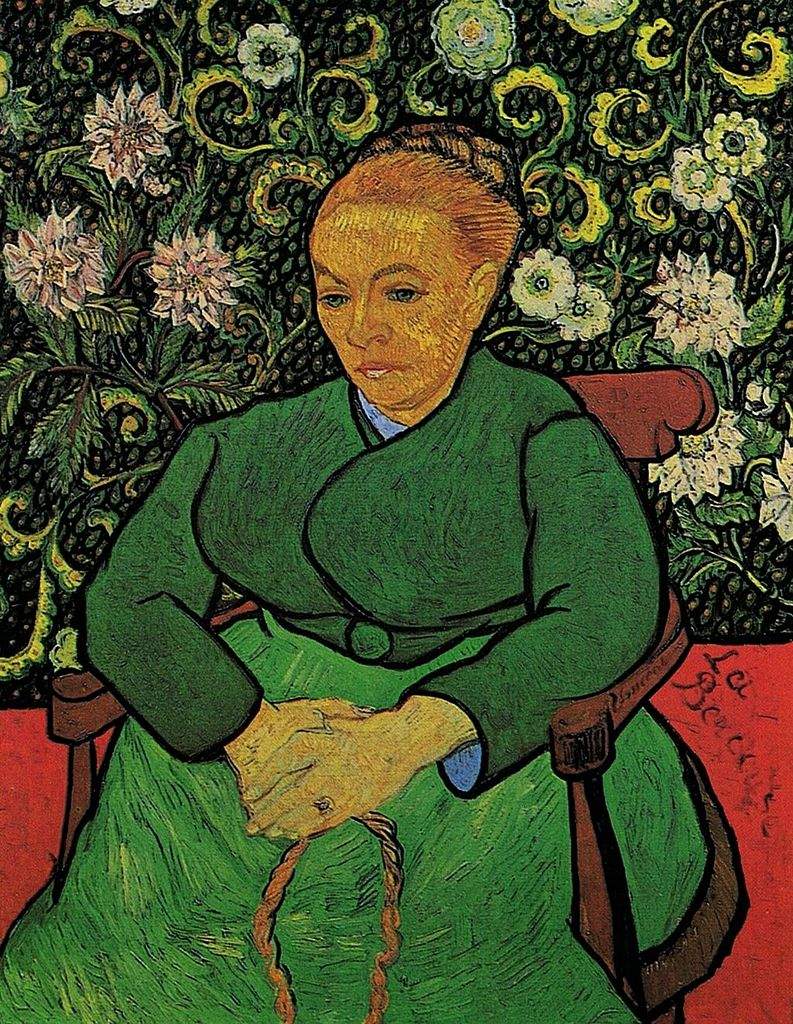
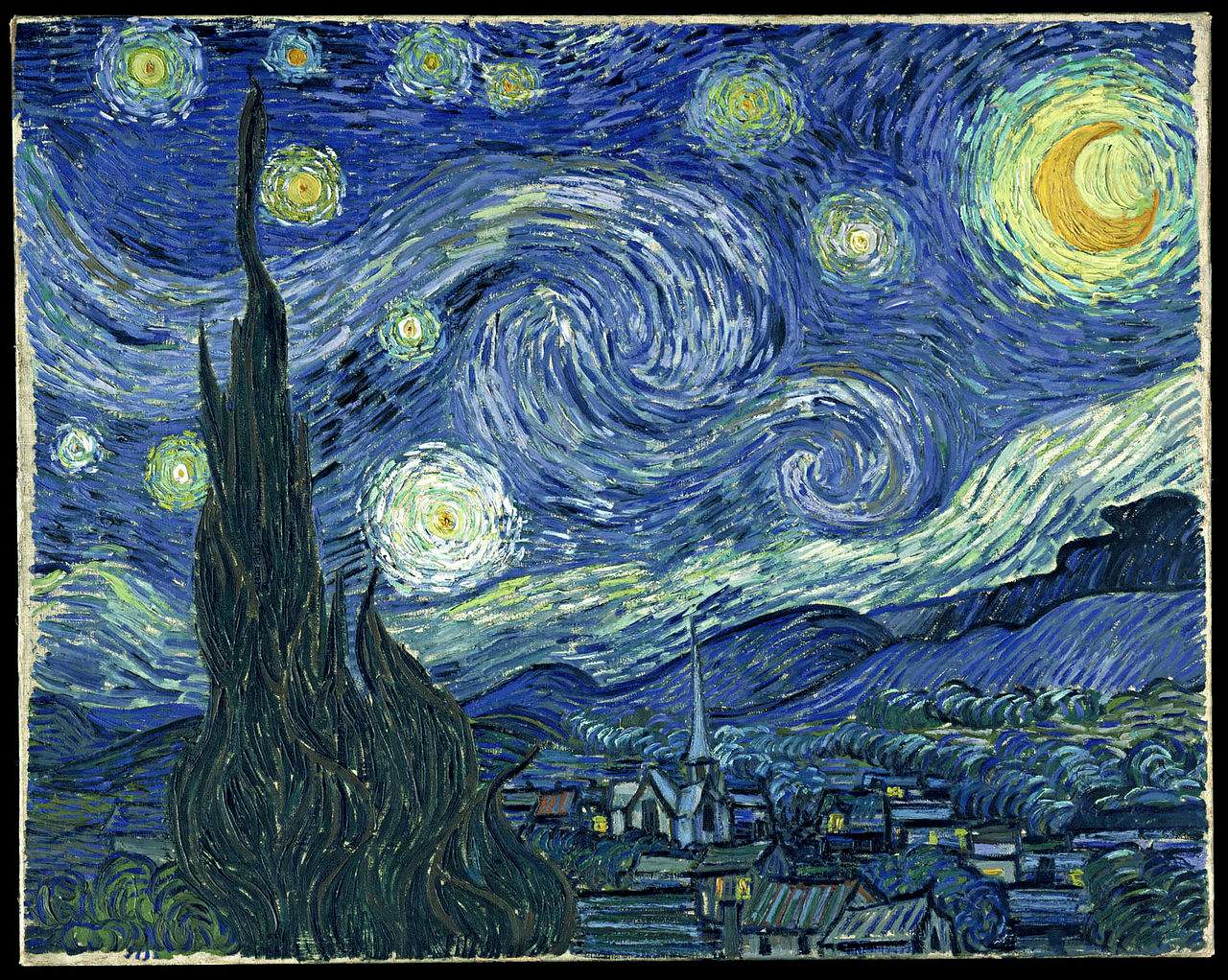
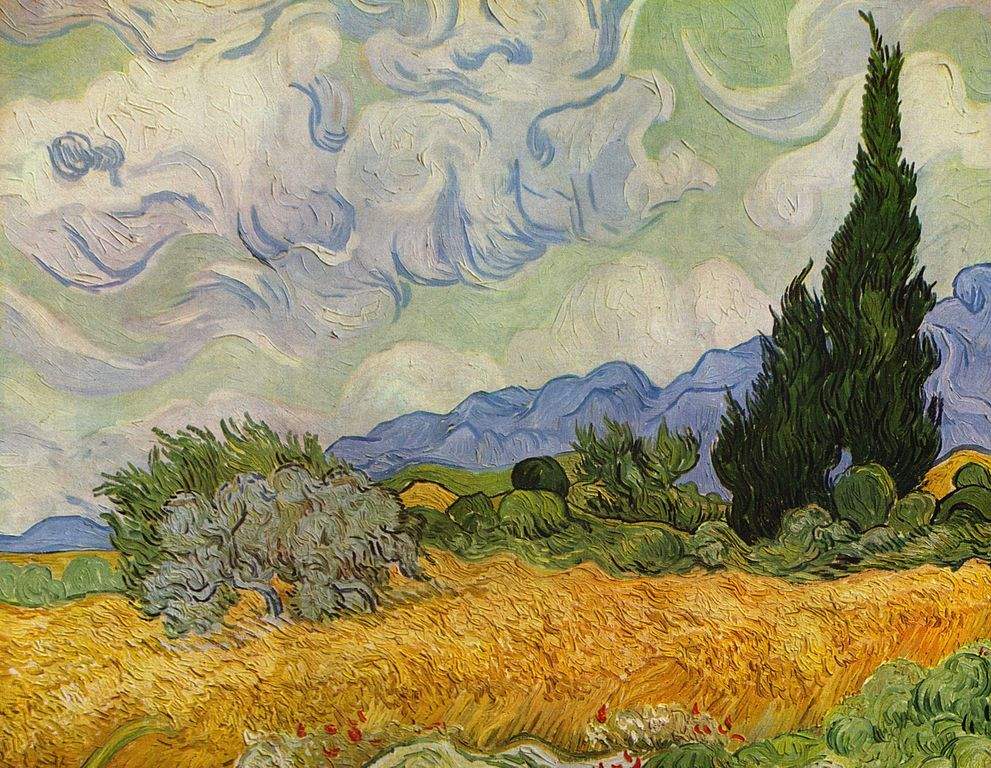
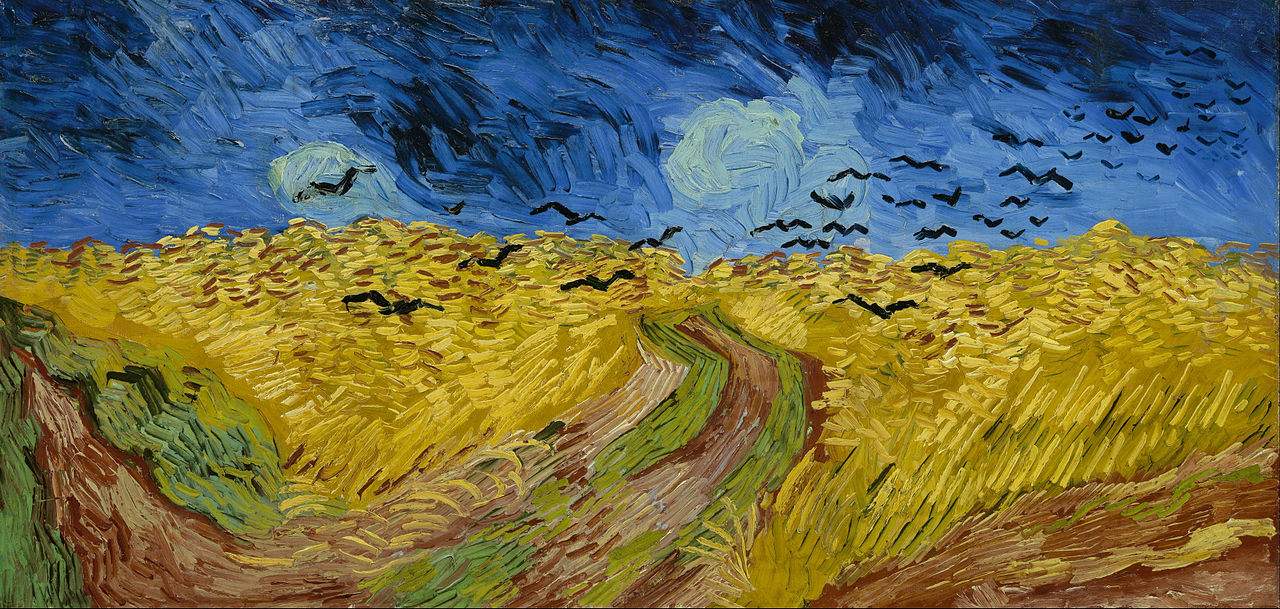
Johanna Bonger, widow of her brother Theo who also died early, took charge ofVincent’s legacy and through frequent contacts with gallery owners and museums helped to increase the Dutch painter’s fame.
Van Gogh’s many works are scattered around the world, among museums and private collections from Los Angeles to Tokyo, though most are gathered in the Netherlands. Starting with the Van Gogh Museum, founded in 1973 in Amsterdam, which holds 200 paintings and 750 works including watercolors and drawings, as well as a substantial number of letters the artist sent to his brother Theo. The Potato Eaters (1885) Vincent’s Room at Arlés (1888) as well as Wheatfield with Flight of Crows (1890) are exhibited there.
The second most important nucleus is kept at the Kröller-Müller Museum in Otterlo, nearly 90 paintings and more than 180 drawings including Terrace of the Café in the Evening, Place du Forum in Arles (1888).
Other masterpieces are from the Musée D’Orsay in Paris to the National Gallery in London, as well as in numerous German museums. In Russia in Moscow at the Pushkin Museum and in the United States among others at Moma - Museum of Modern Art in New York, where the famous Starry Night (1889) is located.
Among other world institutions, in Italy in addition to the Galleria d’arte moderna in Milan and the Galleria nazionale d’arte moderna e contemporanea in Rome the Vatican Museums preserve the small Pieta of 1889.
 |
| Vincent van Gogh, life and works of the record-breaking Dutch painter |
Warning: the translation into English of the original Italian article was created using automatic tools. We undertake to review all articles, but we do not guarantee the total absence of inaccuracies in the translation due to the program. You can find the original by clicking on the ITA button. If you find any mistake,please contact us.